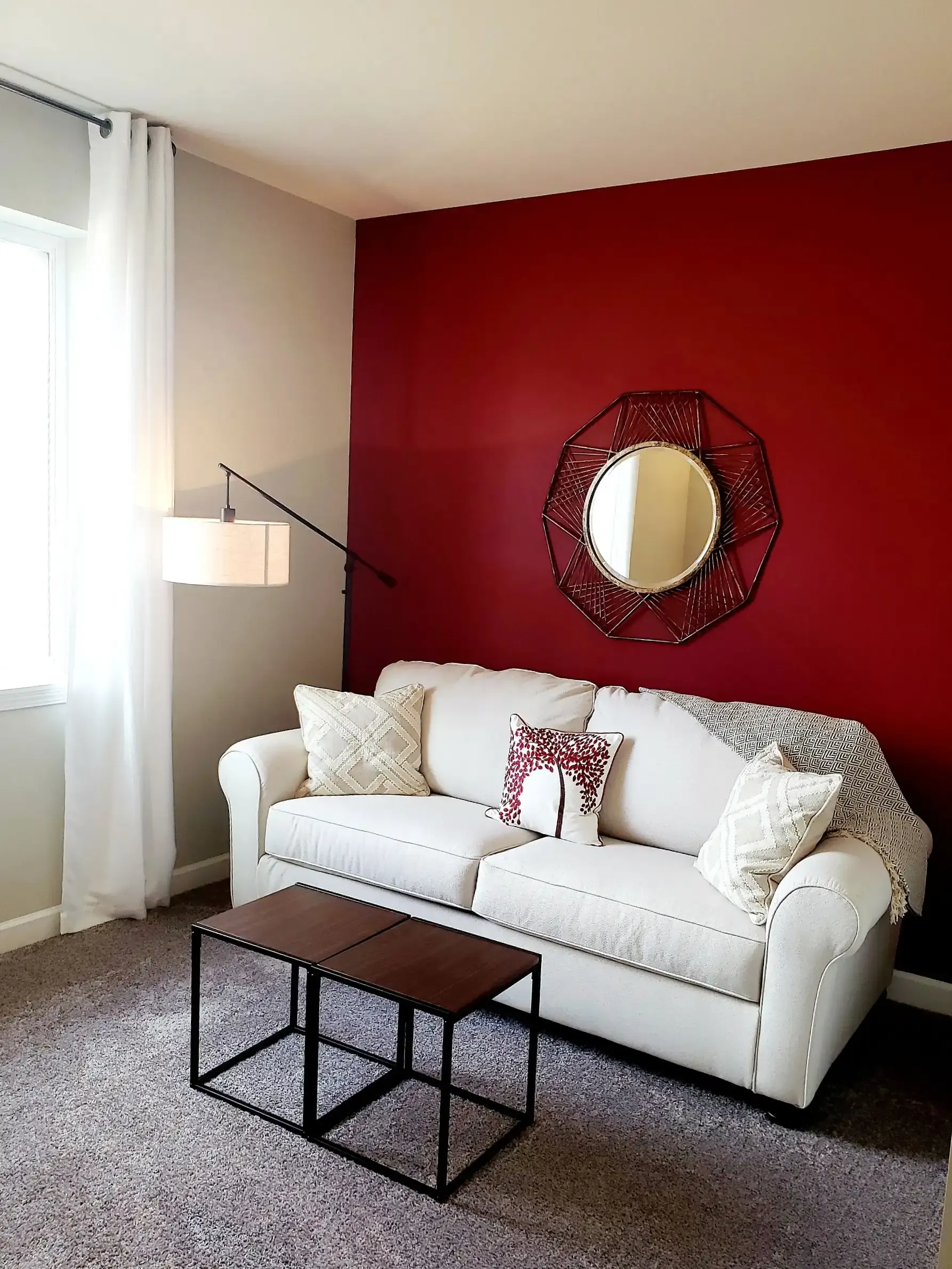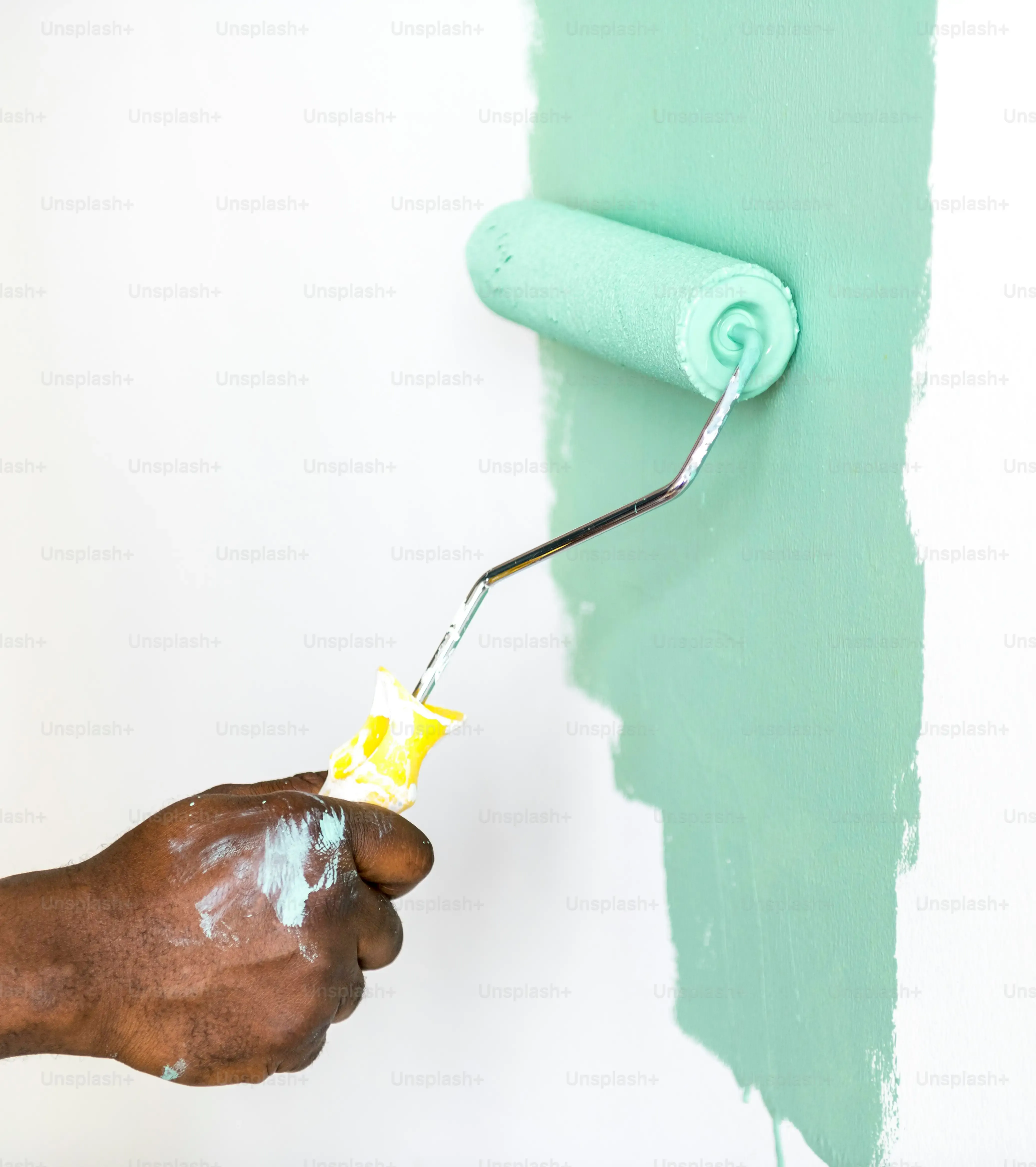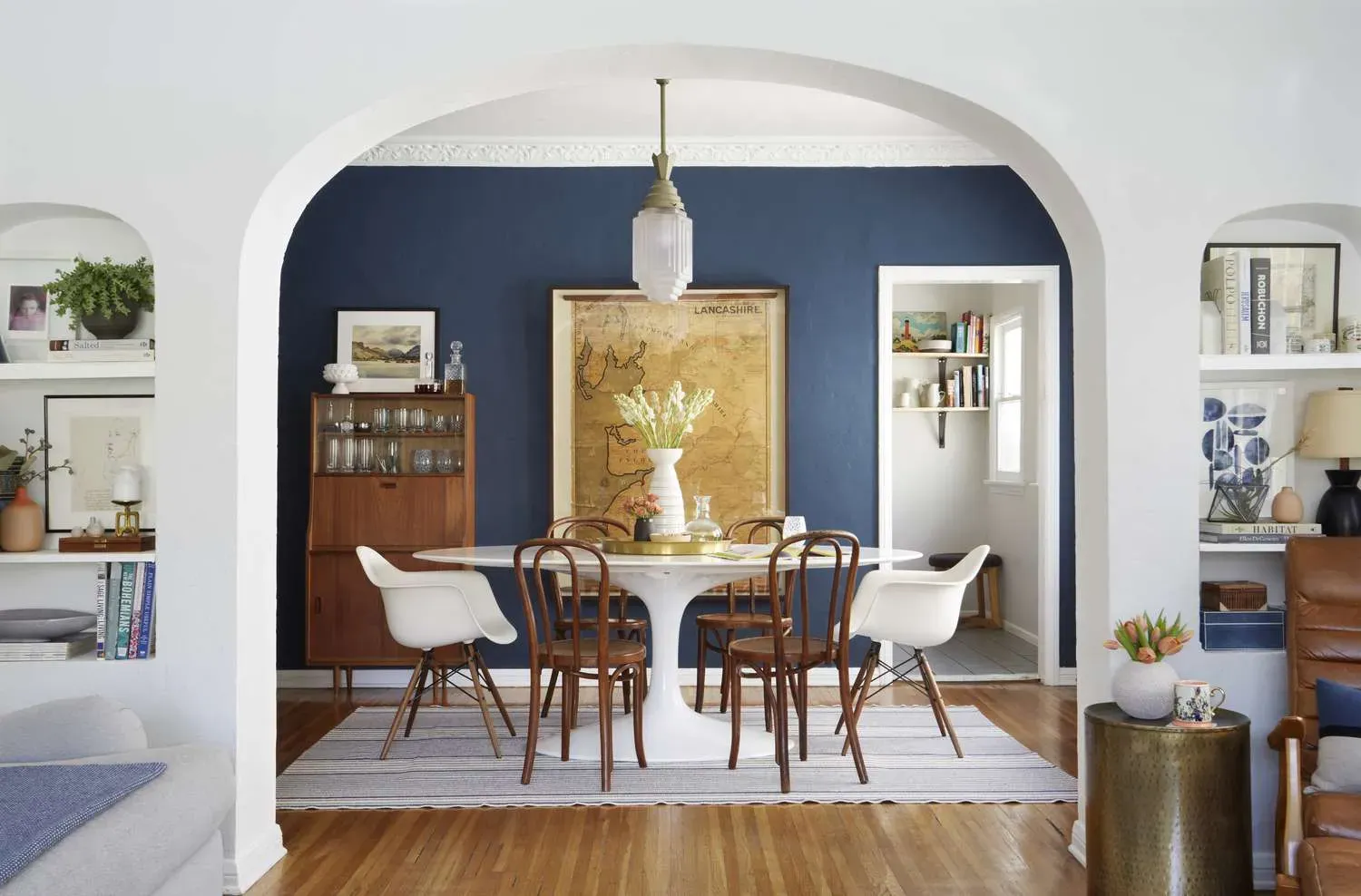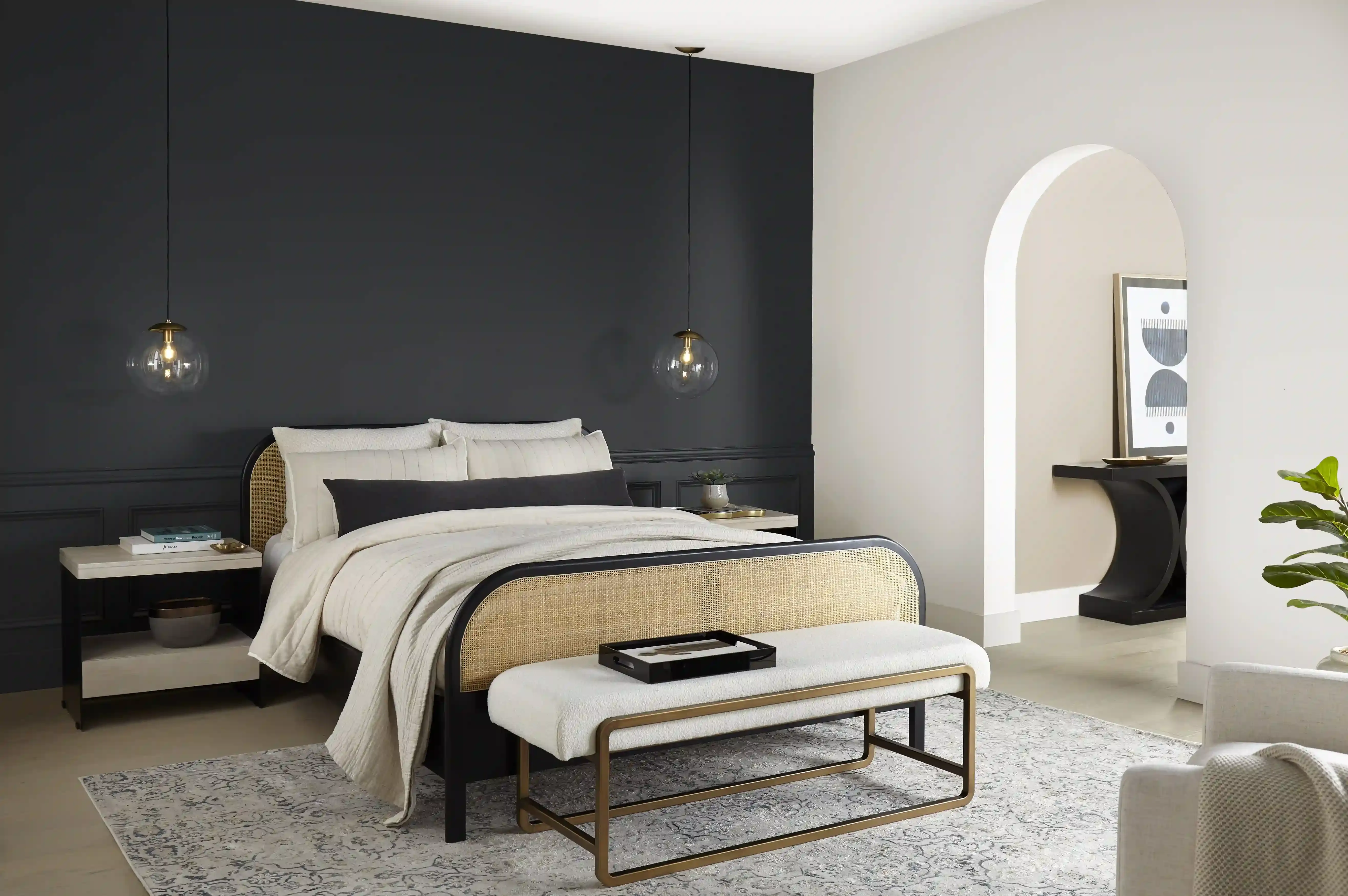Table of Contents
Walk into a room that feels a bit...meh? Maybe it’s just plain walls staring back, doing nothing interesting. It happens. Sometimes a space needs a kick in the pants, a jolt of personality without undergoing a full-scale renovation. That's where the magic of accent walls comes in, specifically using the right accent wall paint colors. It’s not just slapping paint on a wall; it’s a deliberate design choice that can transform how a room feels and functions.
Why Use Accent Wall Paint Colors?

Why Use Accent Wall Paint Colors?
So, you're wondering, "Why Use Accent Wall Paint Colors?" Fair question. Look, sometimes a room just feels...flat. Like it’s missing something, but you can’t quite put your finger on it. Painting one wall a different color isn't just a random act of rebellion against uniformity; it’s a strategic move. It instantly injects personality, gives the eye something interesting to land on, and can make the rest of the room feel more intentional. Think of it as giving one wall a starring role instead of having an ensemble cast of beige. It’s a relatively low-commitment way to make a big visual impact without redecorating the entire space or buying a ton of new furniture.
Picking the Perfect Wall for Your Accent Paint Color

Picking the Perfect Wall for Your Accent Paint Color
Spotting the Room's Star
Alright, so you're sold on the idea of an accent wall. Great. Now, which wall gets the royal treatment? This isn't a random dart throw. You want to pick the wall that naturally draws your eye when you walk in. Usually, this is the wall behind a major piece of furniture, like a sofa in the living room, the headboard in a bedroom, or maybe the wall with a fireplace or a striking window. Think about where you want people to look first. That's your prime real estate for accent wall paint colors.
Sometimes it's obvious, sometimes you have to stand in the doorway and really look around. Avoid picking a wall with too many doors or windows breaking it up. A solid stretch of wall works best for making that color pop and feel like a deliberate statement, not just a leftover patch. It should feel like the wall was *meant* to be different.
Considering Traffic and Flow
Besides being a visual focal point, consider how people move through the room. The accent wall should ideally be somewhere you pause or spend time looking at, not just a wall you quickly pass by on your way to the kitchen. A hallway wall *could* be an accent, sure, but it might not have the same impact as the wall behind your dining table where people gather and linger.
Also, think about the light. Does this wall get direct sunlight at certain times? How will your chosen accent wall paint colors look in different lighting conditions throughout the day? A deep, moody color might look amazing in the evening light but fall flat in bright afternoon sun. Test some swatches on the actual wall you're considering before committing. Trust me, a little planning here saves a lot of regret later.
- Does the wall have a natural focal point like a fireplace or large window?
- Is it the wall you see first when entering the room?
- Does it have minimal interruptions from doors or windows?
- How does light hit this wall throughout the day?
- Is it a wall where people tend to gather or linger?
Popular Accent Wall Paint Colors for Different Rooms

Popular Accent Wall Paint Colors for Different Rooms
Living Room and Bedroom Vibes
Alright, let's talk actual paint colors. When you're staring down swatches for your living room or bedroom, the vibe is usually "relaxing" or "inviting." That's where blues and greens really shine as accent wall paint colors. Think deep navy behind a light gray sofa; it adds depth without being overwhelming. Or a dusty sage green behind your bed, creating a calm, earthy feel. These colors are popular for a reason – they tend to be soothing and pair well with lots of furniture styles.
But you don't have to stick to the calm end of the spectrum. Maybe you want your living room to feel more energetic, or your bedroom to have a touch of drama. A deep charcoal gray or even black can be incredibly sophisticated on an accent wall, especially with lighter furniture and plenty of texture. A rich, jewel-toned emerald or sapphire can make a space feel luxurious. Just make sure the rest of the room supports that drama, otherwise, it'll just look like a dark wall in a bright room.
Kitchen and Dining Room Flavors
The kitchen and dining room often feel like the heart of the home, places for gathering and, well, eating. Here, you might want colors that feel a bit more stimulating or cheerful. Bright, warm accent wall paint colors can work wonders. Imagine a sunny yellow or a warm terracotta on a dining room wall – it can make the space feel instantly more welcoming and, anecdotally, might even boost appetites. A bold red is a classic choice for dining areas, adding energy and a touch of formality.
In the kitchen, an accent wall is often less about a whole wall and more about a specific area, like behind open shelving or in a breakfast nook. Here, you can get away with brighter or more unexpected shades. A vibrant teal or a zesty orange could add a fun pop against neutral cabinets. Just remember to consider how the color interacts with your existing finishes – you don't want your cabinets to look dingy next to your fabulous new wall color.
- Living Room: Deep Navy, Dusty Sage, Charcoal Gray, Emerald Green
- Bedroom: Sage Green, Deep Teal, Charcoal Gray, Rich Plum
- Dining Room: Sunny Yellow, Terracotta, Bold Red, Deep Blue
- Kitchen: Vibrant Teal, Zesty Orange, Bright Yellow, Slate Gray (behind open shelves)
Bold vs. Subtle: Picking Your Accent Wall Paint Color Vibe

Bold vs. Subtle: Picking Your Accent Wall Paint Color Vibe
Going Big with Bold Accent Wall Paint Colors
So, you’ve picked the wall, but what color personality are you going for? This is where you decide if you want your accent wall paint colors to shout or just politely wave. If "shout" is your jam, think bold. We're talking deep, saturated colors like a dramatic forest green, a fiery orange-red, or even a deep, inky black. These colors make an immediate statement. They grab attention the second someone walks in. It takes a bit of confidence to commit to a bold color, but the payoff can be huge. A bold wall can anchor a space, make lighter furniture pop, and create a really dynamic feel. It's not for the faint of heart, but if you want your room to have some serious character, this is the way to do it.
Whispering with Subtle Accent Wall Paint Colors
Maybe you’re not into the whole "wall screaming for attention" thing. That’s fine. Accent wall paint colors don't *have* to be dramatic. Subtle can be just as effective, sometimes more so, depending on your goal. Think about using a shade that's just a few steps darker or lighter than your other walls, or perhaps a muted version of a color already in the room's decor. A soft charcoal gray against light gray walls, a dusty rose in a room with beige tones, or a gentle sage green with off-white trim. These subtle choices add depth and dimension without overpowering the space. They provide a visual break and a point of interest, but the overall feeling remains calm and cohesive. It’s like adding a sophisticated underline instead of a giant exclamation point.
Which Vibe Calls to You?
- Do you want the wall to be the main focal point? (Bold)
- Are you aiming for a calm, layered look? (Subtle)
- Does your furniture and decor already have a lot of strong colors? (Subtle might balance it)
- Is the room large or small? (Bold can work in large rooms, subtle can make smaller rooms feel cozier without shrinking them)
- How much natural light does the room get? (Bold colors can feel heavy in dark rooms, subtle shades are more forgiving)
Making Your Accent Wall Paint Colors Pop

Making Your Accent Wall Paint Colors Pop
Using Contrast and Color Harmony
you've got your wall, you've got your dream accent wall paint colors picked out. How do you make sure it doesn't just sit there looking... painted? It's all about contrast, folks. If your main walls are a soft white or light gray, a deep, moody color like navy or forest green on the accent wall will immediately stand out and give the room some backbone. Conversely, if your main walls are darker, a lighter, brighter accent can provide a much-needed burst of light and energy. Think about the existing colors in your furniture, rugs, and art. Your accent wall paint colors should ideally complement these, either by being a contrasting shade or by pulling a deeper tone from your existing palette.
I once saw someone paint an accent wall a striking teal in a living room that had a rug with small pops of teal. It wasn't a perfect match, but it was close enough to feel intentional, like the rug had been waiting for its wall soulmate. The rest of the room was pretty neutral, so that teal wall just sang. It wasn't just a wall; it was a statement piece. That's the power of using color harmony and contrast together – it elevates the accent wall from just a patch of paint to a key player in the room's overall design.
Adding Texture and Layers
Painting a wall is just the first step in making your accent wall paint colors truly pop. Think about what goes *on* or *in front of* that wall. Layering is key. A large piece of art, a striking mirror, or even a gallery wall can draw the eye and add another dimension. The artwork doesn't have to perfectly match the wall color, but it should feel harmonious. A bold abstract piece can look amazing against a subtle accent wall, while a more subdued piece might stand out better against a vibrant color.
Consider adding texture too. Floating shelves styled with books and decorative objects add depth. A console table with lamps or plants in front of the wall breaks up the large expanse of color. Even the texture of the paint itself can make a difference – a matte finish absorbs light and gives a sophisticated look, while a satin or semi-gloss will reflect light and make the color appear brighter and more vibrant. Don't just paint it and walk away; dress it up a little. Give that accent wall the attention it deserves.
Tips to Make Your Accent Wall Pop
- Use contrasting trim color (white trim against a dark wall, or vice versa).
- Hang a large piece of artwork or a mirror.
- Install floating shelves and style them with decor.
- Place a piece of furniture (like a sofa or console table) in front of the wall.
- Add lighting that highlights the wall, like picture lights or lamps.
- Incorporate textiles (like curtains or throws) that pick up on the accent color.
Making Your Mark with Accent Wall Paint Colors
So, you've seen how strategic splashes of accent wall paint colors can rescue a room from blandness. It's not about chasing trends; it's about making a conscious decision to highlight a feature, define a zone, or simply inject some much-needed visual energy. Whether you opt for a deep, dramatic shade behind the bed or a vibrant hue to liven up a home office, the goal is to create impact without overwhelming the space. A well-chosen accent wall is a relatively low-risk, high-reward move in the design game. It's your chance to experiment, to show a bit of personality on your walls. Don't overthink it too much. Pick a color that speaks to you and give it a shot. The worst that happens? You repaint it. And frankly, that's not the end of the world.
